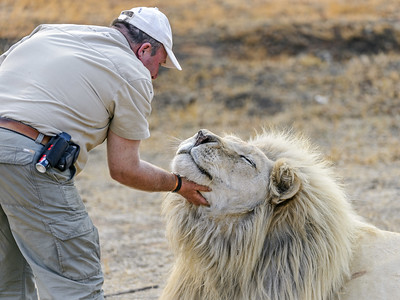Archive for the ‘Positivity’ Category
I’m Thankful!
 How often do you stop what you’re doing, calm yourself, quiet your mind, and think about what you’re thankful for?
How often do you stop what you’re doing, calm yourself, quiet your mind, and think about what you’re thankful for?
To me, thankfulness is about what I have. I have a family I love and they love me, and for that I am thankful. First and foremost, front and center, family is the first thing that comes to me when I think about what I have. I’m thankful for my family.
I also have my health, and I am thankful for it. Funnily, as I get older and recognize my body is changing, it helps me appreciate the health I still have. Sometimes I get frustrated because I can’t do everything I used to do, but I can still do a lot. And most of the time I’m thankful for the health I have.
I am thankful for the time I have. With the kids no longer in the house, I have more quiet time which I value. I appreciate my quiet time more after something comes up and I don’t have as much as I’d like. Sometimes I complain when things come up and I have less quiet time, but I have nothing to complain about because I have enough. After I get over myself, I am more thankful for my quiet time. And, secretly, I wish the kids were back in the house and I had less quiet time. Don’t tell anyone.
I’ve found that my thankfulness is amplified when I tell people about it. When I tell people I’m thankful for their friendship, I’m doubly thankful – once because I remind myself and once because my thankfulness is appreciated. The same thing goes when I tell someone I’m thankful for something they did.
Why not stop what you’re doing, calm yourself, quiet your mind, and think about what you’re thankful for? And why not double the fun and tell someone about it?
You can generate as much thankfulness as you want. And if you give it away, you can always make more. So why not give away some thankfulness to someone you are thankful for? And why not make more and do it again?
Happy Thanksgiving and thanks for reading.
Mike
Image credit — Cindi Albright
It’s not the work, it’s the people.
 I used to think the work was most important. Now I think it’s the people you work with.
I used to think the work was most important. Now I think it’s the people you work with.
Hard work is hard, but not when you share it with people you care about.
Struggle is tolerable when you’re elbow-to-elbow with people you trust.
Fear is manageable when you have faith in your crew.
You’re happy to carry an extra load when your friend needs the help.
And your friend is happy to do the same for you.
When you’ve been through the wringer a teammate, they grow into more than a teammate.
If you smile at work, it’s likely because of the people you work with.
And when you’re sad at work, it’s also likely because of to the people.
When you care about each other, things get easier, even when they’re not easy.
Stop what you’re doing and look at the people around you.
What do you see?
Who has helped you? Who has asked for help?
Who has confided in you? To whom have you confided?
Who believes in you? In whom do you believe?
Who are you happy to see? Who are you not?
Who will you miss when they’re gone?
For the most important people, take a minute and write down your shared experiences and what they mean to you.
What would it mean to them if you shared your thoughts and feelings?
Why not take a minute and find out?
Wouldn’t work be more energizing and fun?
If you agree, why not do it? What’s in the way? What’s stopping you?
Why not push through the discomfort and take things to the next level?
Image credit — HLI-Photography
When You Have Enough…
 When you have enough, you have plenty to give to others.
When you have enough, you have plenty to give to others.
And when you give to others, they remember.
When you have enough, you can be happy with things as they are.
And when you are happy with things as they are, people like to be around you.
When you have enough, there’s no need to take.
And when you don’t take, there’s more for others.
When you have enough, you don’t strive for more.
And when you don’t strive, it’s easier to do what’s right.
When you forget you have enough, tell yourself you have enough.
And when you tell yourself you have enough, you end up remembering you have enough.
When you have enough, there is less stress.
And when there’s less stress, you have more energy to apply in skillful ways.
When you have enough, it’s because you’ve decided you have enough.
Why not decide you have enough?
Image credit — Nenad Stojkovik
What do you want?
 If you always want to be right, it’s time to ask new questions.
If you always want to be right, it’s time to ask new questions.
If you want to listen well, don’t talk.
If you want to start something new, stop something old.
If you want to do it again for the third time. give someone else a chance.
If you want it to be perfect, you don’t want to finish.
If you want to do something new, be unsure about what to do next.
If you want to hold tightly to things as they are, all you get are rope burns.
If you want to teach, find a student.
If you want someone’s trust, earn it.
If you want all the credit, you’re fast becoming a team of one.
If you want the Universe to change, don’t.
If you want to earn trust, tell the truth.
If you want good friends, be one.
Image credit — Sowhuan
The Power of Praise
 Praise happens when you tell someone they did something wonderful. Praise is virtually free and almost the most powerful force in the universe.
Praise happens when you tell someone they did something wonderful. Praise is virtually free and almost the most powerful force in the universe.
When you tell someone what they did was amazing, they stand three inches taller. Right in front of you, they get taller. They grow. They expand. Don’t believe me? Try it. And bring a ruler.
To deliver praise, you must pay attention. You must invest in what’s going on, you must hear what is said, and watch what is done. Congratulations. Though you have yet to deliver praise, you’ve already differentiated yourself. Next, you must compare the behavior against the norms and recognize a difference. Sure, it’s a simple difference calculation, but it’s a calculation that takes attention and caring, which in today’s rat race are in short supply. Now, you must find words the right words to describe the specialness of the behavior-why it’s different and why it matters. Then, you’ve got to deliver it in a way that is worthy of the specialness.
Deliver praise in public and be specific. This person (use their name) did (say what they did) and it’s important because (and say why it is important). And tell people what you think and feel. They (use their name) did (say what they did) and I feel (e.g., happy, excited, proud) because (tell them why you feel as you do). Feel free to steal that script, but if you do, stick to it because it’s a good one.
A rule: If you don’t praise people, you don’t know what you’re doing.
But here’s the thing about praise. If you fake it, you bring about its opposite. When you fake it, people get smaller and they get angry. They get smaller because they know they are being patronized. And they get angry for the same reason. So, a word of caution. If you deliver paise that’s fake, you will lose all credibility with the recipient and anyone in earshot. And it’s such a violation of their dignity, I don’t know a way to resurrect their trust. In short, if you fake it, it’s over for you.
Another rule: If you have the urge to deliver fake praise, don’t.
Praise is powerful, but in today’s environment is almost extinct. It’s not that praise-worthy behavior is uncommon, rather, the time and attention required to recognize and formally acknowledge praise-worthy behavior is uncommon.
If you want to elevate the performance of a team, praise their behavior. And do it in public. Pay attention and praise. Schedule a meeting, buy the pizza, and praise. Be specific, be genuine, and praise.
Yes, you will spend a lot of money on pizza, and, yes, that is the best return on investment in the universe.
“Alex and his lion friend” by Tambako the Jaguar is marked with CC BY-ND 2.0.
Problems, Solutions, and Complaints
 If you see a problem, tell someone. But, also, tell them how you’d like to improve things.
If you see a problem, tell someone. But, also, tell them how you’d like to improve things.
Once you see a problem, you have an obligation to seek a solution.
Complaining is telling someone they have a problem but stopping short of offering solutions.
To stop someone from complaining, ask them how they might make the situation better.
Problems are good when people use them as a forcing function to create new offerings.
Problems are bad when people articulate them and then go home early.
Thing is, problems aren’t good or bad. It’s our response that determines their flavor.
If it’s your problem, it can never be our solution.
Sometimes the best solution to a problem is to solve a different one.
Problem-solving is 90% problem definition and 10% getting ready to define the problem.
When people don’t look critically at the situation, there are no problems. And that’s a big problem.
Big problems require big solutions. And that’s why it’s skillful to convert big ones into smaller ones.
Solving the right problem is much more important than solving the biggest problem.
If the team thinks it’s impossible to solve the problem, redefine the problem and solve that one.
You can relabel problems as “opportunities” as long as you remember they’re still problems
When it comes to problem-solving, there is no partial credit. A problem is either solved or it isn’t.
Making Time To Give Thanks
 The pandemic has taken much from us, but we’re still here. We have each other, and that’s something we can be thankful for.
The pandemic has taken much from us, but we’re still here. We have each other, and that’s something we can be thankful for.
But going forward, what will you do? Will you worry about making the right choice, or will you be thankful you have a choice? Or maybe both?
When things don’t go according to your arbitrarily set expectations, will you judge yourself negatively? Or will you give yourself some self-love and be okay with things as they are? Will you be angry that the universe didn’t bend to your will or will thankful that you have an opportunity to give it another try tomorrow? Or maybe a little of both?
When you see someone struggling, what will you do? Will you play the zero-sum game and save all your resources for yourself? Or will you be thankful for what you have and give some of your emotional energy to someone who is having a hard day? I don’t think Thanksgiving is a zero-sum game, but no need to take my word for it. What’s wrong with running your own experiment? You may find that by spending a little you’ll get a lot more in return.
Everything is a little harder these days. This is real and natural. We’ve been through a lot together. Last year we did everything we could just to keep our heads above water. We worked harder than ever just to break even. We’re worn down and yet there seems to be no relief in sight. And now, the not-so-subtle economic forces will push us to dismiss our tiredness and try to convince us to strive for improvements and productivity on all fronts. Where are the thanks in all that?
As people that care, we can give thanks. We can thank the people who gave us everything they had. Of course, their work wasn’t perfect (it never is), but they held it together and they made it happen. They deserve our thanks. A short phone call will do, and so will a short text. And for the people that gave everything they had and couldn’t hold it together, they deserve our thanks more than anyone. They gave so much to others that they had nothing in reserve for themselves. They deserve our thanks, and we are just the people to give it to them.
What we were able to pull off last year is amazing. And that’s something we can be thankful for. So, give yourself thanks and feel good about it. And, if you have anything left in your tank, think about those special people that gave too much and paid the price. They need your thanks, too. And, remember, a short phone call or text is all it takes to give thanks.
Next year will be difficult. The world will ask us to step it up, even though we’re not ready. We’ll be asked to do more, even though our emotional gas tanks are empty. Let’s help each other get ready for next year by giving thanks to each other. Why not reach out to three to five people who made a difference over the last year and thank them?
And, remember, all it takes to give thanks is a short phone call or text.
Happy Thanksgiving.
“Two Hands Making a Heart with Sunset in Background” by Image Catalog is marked with CC0 1.0
Regardless of the problem, the solution lives inside you.
 If you want things to be different than they are, you have a problem. And if you want things to stay the same, you also have a problem. Either way, you have a problem. You can complain, you can do something about it, or you can accept things as they are.
If you want things to be different than they are, you have a problem. And if you want things to stay the same, you also have a problem. Either way, you have a problem. You can complain, you can do something about it, or you can accept things as they are.
Complaining can be fun for a while, then it turns sour. Doing something about it can take a lot of time and energy, and it’s difficult to know what to do. Accepting things as they are can be a challenge because that means it’s time to change your perspective. But it’s your choice. So, what do you choose?
What does it look like to accept things as they are AND do something about it?
If you want someone to be different than they are, you have a problem. And if you want them to stay the same, you have a different problem. Either way, you have a problem. You can complain about them, you can do something about it, or you can accept them as they are.
Complaining about people can be fun, but only in small doses. Doing something about it, well, that’s difficult because people will do what they want to do, not what you want them to do. Accepting people as they are is difficult because it means you have to look inside and change yourself. But it’s your choice. So, what do you choose?
What does it look like to accept people as they are AND to do something that makes things better for all?
If you have a problem with things changing, the solution lives inside you. Things change. That’s what they do. And if you have a problem with things staying the same, the solution lives inside you. Things stay the same. That’s what they do. Either way, the solution lives inside you, and it’s time to look inside.
How would it feel to own your problem and look inside for the solution?
If you have a problem because you want people to be different, the solution lives inside you. People behave the way they want to behave, not the way you want them to behave. And if you have a problem because you want people to stay the same, the solution lives inside you. People change. That’s what they do. Either way, the problem is you, and it’s time to look inside for the solution.
How would it feel to accept people as they are and look inside to solve your problem?
How To Grow Leaders
 If you want to grow leaders, meet with them daily.
If you want to grow leaders, meet with them daily.
If you want to grow leaders, demand that they disagree with you.
If you want to grow leaders, help them with all facets of their lives.
If you want to grow leaders, there is no failure, there is only learning.
If you want to grow leaders, give them the best work.
If you want to grow leaders, protect them.
If you want to grow leaders, spend at least two years with them.
If you want to grow leaders, push them.
If you want to grow leaders, praise them.
If you want to grow leaders, get them comfortable with discomfort.
If you want to grow leaders, show them who you are.
If you want to grow leaders, demand that they use their judgment.
If you want to grow leaders, give them just a bit more than they can handle and help them handle it.
If you want to grow leaders, show emotion.
If you want to grow leaders, tell them the truth, even when it creates anxiety.
If you want to grow leaders, always be there for them.
If you want to grow leaders, pull a hamstring and make them present in your place.
If you want to grow leaders, be willing to compromise your career so their careers can blossom.
If you want to grow leaders, when you are on vacation tell everyone they are in charge.
If you want to grow leaders, let them chose between to two good options.
If you want to grow leaders, pay attention to them.
If you want to grow leaders, be consistent.
If you want to grow leaders, help them with their anxiety.
If you want to grow leaders, trust them.
If you want to grow leaders, demonstrate leadership.
“Mother duck and ducklings” by Tambako the Jaguar is licensed under CC BY-ND 2.0
The Power of Purple
 Blue isn’t better than red, and red isn’t better than blue.
Blue isn’t better than red, and red isn’t better than blue.
What’s better is wearing a red shirt with blue pants or a blue shirt with red pants.
What’s better is wearing one blue sock and one red sock.
What’s better is swapping one of your red socks for a friend’s blue one. Two matching pairs.
What’s better is offering your blue sweater to someone standing in the cold in a red tee-shirt.
What’s better is offering your red rain boots to someone standing in a puddle wearing blue sneakers.
What’s better is a blue hat with a red stripe and a red hat with a blue stripe. That’s how it starts.
What’s better is respecting the right to wear red or blue and choosing to wear purple.
What’s better is being respectful of red, respectful of blue, and coming together under a purple tent.
What’s better is thanking people for wearing purple.
What better is when blue and red are proud to wear purple.
When red and blue become purple, competition becomes cooperation.
When blue and red come together, purple carries the day.
Purple is the most powerful color, but there can be no purple without red AND blue.
“Red + Blue = Purple” by darkday. is licensed under CC BY 2.0
Say no to say yes.
 If the project could obsolete your best work, do it. Otherwise, do something else.
If the project could obsolete your best work, do it. Otherwise, do something else.
But first, makes sure there’s solid execution on the turn-the-crank projects that pay the bills.
If you always say yes to projects, you never have the bandwidth to do the magical work no one is asking for.
When was the last time you used your discretion to work on a project of your choosing? How do you feel about that?
If you’re told to stop the project by the most successful business unit, stomp on the accelerator.
The best projects aren’t the ones with the best ROI. The best projects are the ones that threaten success.
If you’re certain of a project’s ROI, there is no novelty.
If the project has novelty, you can’t predict the ROI. All you can do is decide if it’s worth doing.
There’s a big difference between calculating an ROI and predicting the commercial success of a project.
If your company demands certainty, you can be certain the new projects will be just like the old ones.
If the success of a project hinges on work hasn’t been done before, you may have a winner.
Say yes to predictability and you say no to novelty.
Say no to novelty and you say no to innovation.
Say no to innovation and you say no to growth.
Say no to growth and the game is over.
Say no to good projects so you can say yes to the magical ones.
Say no to ROI so you work on projects that could reinvent the industry.
If the project doesn’t excite, just say no.
Image credit – Lucie Provincher
 Mike Shipulski
Mike Shipulski